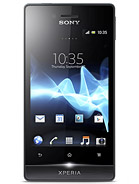 Today we’ll be reviewing the Sony Xperia Miro. The Sony Xperia Miro is also known as the Sony ST23i and the Sony ST23a. This phone isn’t one of the most powerful ones, but it quite good compared to many others. However, many Xperia phones tend to be weaker as far as hardware is concerned, yet they run extremely well for some reason. Could be that stuff is just really well optimized for these phones, or maybe something else. Nobody can truly say for sure, all that can be said is that this phone is really awesome. And despite being no the best looking phone ever, it is however quite good looking. Now what you may notice quite different about this phone is that it is available in two different versions, but both of them with the same name. Should you refer to it as the Sony Xperia Miro, you will know no difference between those two version. However, should you call them the Sony ST23i and Sony ST23a, you’ll notice that these two phones are somewhat different from one another. You’ll see just how different in a moment or so. Since I’m not too keen on prolonging the inevitable and on writing long intros, let us commence with this little review.
Today we’ll be reviewing the Sony Xperia Miro. The Sony Xperia Miro is also known as the Sony ST23i and the Sony ST23a. This phone isn’t one of the most powerful ones, but it quite good compared to many others. However, many Xperia phones tend to be weaker as far as hardware is concerned, yet they run extremely well for some reason. Could be that stuff is just really well optimized for these phones, or maybe something else. Nobody can truly say for sure, all that can be said is that this phone is really awesome. And despite being no the best looking phone ever, it is however quite good looking. Now what you may notice quite different about this phone is that it is available in two different versions, but both of them with the same name. Should you refer to it as the Sony Xperia Miro, you will know no difference between those two version. However, should you call them the Sony ST23i and Sony ST23a, you’ll notice that these two phones are somewhat different from one another. You’ll see just how different in a moment or so. Since I’m not too keen on prolonging the inevitable and on writing long intros, let us commence with this little review.
SUMMARY
We’ll start off this little review, as I said a while back, with a brief summary of the device to be reviewed. As I mentioned before, and I’m sure I mentioned it not once but a few times already, the Sony Xperia Miro isn’t one of the strongest phones. Actually, it’s quite the opposite of that. This phone is quite weak and can barely be considered decent. However, the makers of this phone made sure that it looks awesome and most apps will run on it. Plus, how often can you say you got such an awesome looking phone for only 200 dollars or 150 euros ? We’ll, that’s the going price anyway, I can assure you that the publishers will add to that price quite a lot. As I mentioned before a few times, while this phone may not be the strongest, its hardware is quite decent and the phone itself has more features and most high-end phones on the market. You will see all of that for yourself in just about a minute. I hope that was enough to make you want to know more about the phone. Notice that each important part is given its own paragraph in order to help the user scanning the text for interesting bits. That’s it for the summary, I hope you enjoy the review.
GENERAL
We’ll begin this little review by taking a brief look at the more general stuff, such as : supported networks and dates : announcement as well as release. The Sony Xperia Miro supports the following networks : 2G ones ( GSM 850, GSM 900, GSM 1800 and GSM 1900 ) and 3G ones ( as I mentioned, there is a difference here between the two different versions of the Sony Xperia Miro : the ST23i one has HSDPA 900 and HSDPA 2100 and the ST23a one has HSDPA 850, HSDPA 1900 and HSDPA 2100 ). The Sony Xperia Miro was announced in June 2012 and is expected to come out somewhere around Q3 of 2012. I’m sorry but I can’t provide a more reliable release date. It may be available in some places already, however. Since I’ve nothing left to say here, let us move on now to the next part – BODY.
BODY
Next up we’ll be taking a look at the aspect of the Sony Xperia Miro. Here we’ll take a look at the aspect of the Sony Xperia Miro, more precisely, at things such as : the size, weight and see if the Sony Xperia Miro has any particularities related to its aspect as well. The Sony Xperia Miro has the following dimensions : 113 x 59.4 x 9.9 mm. Judging from those, the phone isn’t exaggeratedly big, but it isn’t all that small either. The weight of the Sony Xperia Miro is a normal one, being around 110 grams. The only particularity of the Sony Xperia Miro is the fact that it has Touch-Sensitive Controls instead of frontal buttons, which is a good thing, but I do tend to prefer phones which have buttons because I’m old-school like that. That’s about all there is to this part, so let’s move on now to the next one – DISPLAY.
DISPLAY
Next up we’ll be taking a look at the display. Here you can find out a few details about the type of screen, screen size, screen resolution and pixel density and also see if the screen has any protection and any particularities that might set it apart from the rest of the phones. The Sony Xperia Miro has an LED-backlit LCD with capacitive touchscreen and approximately 16 million colors. The screen size is around 3.5 inches and it can house a resolution of around 320 x 480 pixels. The pixel density isn’t so great, being only around 165 ppi. Despite the pixel density not being so great, the screen more than makes up for it. LED-Backlit LCD is one of the best types of screen as it makes it quite possible to use the phone in areas with lots of light and not worry about reflections. Still, with all its good points, I would avoid direct sunlight as that can still create reflections no matter the technology. However, as long as you use it in a shady cool place, you should have no problems with it. As I already said, this screen is one of the finest. The Sony Xperia Miro also has Multitouch on it, however, it isn’t the advanced sorts of Multitouch as it only supports up to 2 simultaneous fingers. Unfortunately, the Sony Xperia Miro has no screen protection on it, so you’ll have to be extra careful with its handling. This phone also has a Sony Mobile BRAVIA engine on it. Also, I take back that stuff about the reflections. That doesn’t apply for the Sony Xperia Miro as this phone has an Anti-Reflective Coating on its screen. Having nothing left to say here, let’s move on now to the next part – SOUND.
SOUND
Next up we’ll be taking a look at the audio output capabilities of the Sony Xperia Miro. Normally, here we’re only trying to see whether or not the reviewed device has any audio enhancement whatsoever on it, be them software-based or hardware-based. Unfortunately, since the Sony Xperia Miro doesn’t seem to have any, we’ll have to cut this part short. While in appearance it doesn’t have any notable enhancements, in essence it may have one for how well the music is heard. If it didn’t have anything for music quality, then the battery part wouldn’t have any information about how long the phone can survive in music-play. Since it does have that info, we can only assume that the Sony Xperia Miro has a bit of musical quality enhancement on it. So, since there’s nothing left to talk about here, let’s move on now to the next part – MEMORY.
MEMORY
Next up we’ll be looking at the memory of the Sony Xperia Miro. Here you can find out a bit about the internal storage space and ways of expanding said storage space, as well as a bit about the RAM memory of the Sony Xperia Miro. The internal storage space of this phone is 4 GB, however, out of those 4 only 2.2 GB are user-available. The rest is dedicated for system use only. Now normally I don’t agree saying the phone has an amount and X part of that amount is usable. I prefer phones to sound like this : it has X storage space, I won’t bother you with the storage space reserved for the system since you won’t be dealing with that. On one hand, it’s good since you know how much the system can manage ( more space for the system = it will run faster ) but on the other hand it’s a real nuisance. Moving on, the RAM of the device is around 512 MB. Normally I’d say it’s pretty good, which frankly it is, but considering that the current maximum isn’t 1 GB, but 2, one can never know. In case the 2.2 GB isn’t enough for you, know that the phone has a Micro SD card slot which uses any card of up to 32 GB. Since I’ve nothing left to say here, let’s move on to the next part – CONNECTIVITY.
DATA CONNECTION
Next up we’ll be taking a look at the connectivity of the Sony Xperia Miro. Here you can find out a bit about the GPRS and EDGE, the Speed and WLAN and the Bluetooth, USB and other ( if any ) connections of the Sony Xperia Miro. The Sony Xperia Miro has both GPRS and EDGE. While my sources fail to mention what Class they both are, we do know what speed they can each reach, fact which is even better : the GPRS goes up to 86 KB/s and the EDGE up to 237 KB/s. The Speed of the Sony Xperia Miro is measured as following : HSDPA at up to 7.2 MB/s and HSUPA at up to 5.76 MB/s. The WLAN of the Sony Xperia Miro is a Wi-Fi 802.11 b/g/n with Wi-Fi Direct, DLNA and Wi-Fi hotspot. The Bluetooth of the Sony Xperia Miro is a v2.1 one with A2DP and EDR. The USB port of the Sony Xperia Miro is a Micro USB v2.0 one with USB On-the-Go support. This concludes my review of the connectivity, so let’s move on now to the next part – CAMERA.
CAMERA
Now is the time to take a brief look through the camera of the Sony Xperia Miro. Here you can find out a bit about the main and secondary cameras ( if any ) as well as their features and capabilities. The main camera of the Sony Xperia Miro is a 5 MP one which can photograph at resolutions of approximately 2592 x 1944 pixels. The features of this camera are as following : autofocus, LED flash, geo-tagging, touch focus, face and smile detection and 3D sweep panorama. This camera can record video in 720p HD quality at around 30 frames per second. The video recorder has the following features : continuous autofocus, video light and video stabilizer. The secondary camera of the Sony Xperia Miro is a VGA one with no features of its own. Since there’s nothing left to be said for this part, let’s move on now to the next one – BATTERY.
BATTERY LIFE
Next up we’ll be taking a brief look at the battery of the Sony Xperia Miro. Here you can find out a bit about the type of battery of the Sony Xperia Miro and see how long this battery can function. The battery of the Sony Xperia Miro is a Standard Li-Ion 1500 mAh battery. This battery can function as following : up to 470 hours of stand-by in 2G and up to 545 hours of stand-by in 3G; up to 5 hours of talk-time in 2G and up to 6 hours of talk-time in 3G; up to 36 hours and 30 minutes of continuous music play. That about covers all that I had to say about the battery, so let’s move on now to the next part – HARDWARE.
HARDWARE
Next up we’ll be taking a look at the three main hardware components of the Sony Xperia Miro : processor, motherboard and graphics card. The processor of the Sony Xperia Miro is a Single-Core 800 MHz Cortex-A9 processor. The chipset of this device is a Qualcomm MSM7225A one and the GPU is an Adreno 200 one. As I said before, the hardware is pretty weak. Still, it’s decent and one can work with it should one choose to. Having nothing left to say here, let’s move on now to the next part – SOFTWARE.
SOFTWARE
Time to take a brief look at the OS version of the Sony Xperia Miro and see whether or not it can handle, or if it even needs, an upgrade to a better one. The Android OS version of the Sony Xperia Miro is Android OS v4.0 Ice Cream Sandwich. There is news that soon the next version of the Android OS will come out, something about v4.1 Jelly Bean. However, I don’t know whether it will even work on phones. I did hear a few rumors a while back that they’ll revert to the same : one OS for tablets, one OS for phones; but then again people like to talk. Only time will tell, in the end. Enough for this part, let’s go now to the final one – FEATURES.
FEATURES
Time to take a brief look at the features and capabilities of the Sony Xperia Miro. The sensors of this phone are as following : Accelerometer, Proximity and Compass. The messaging on this device can be done via : SMS ( with Threaded View ), MMS, E-Mail, Push Mail and IM. This phone also has a browser which uses HTML5 and has integrated support for Adobe Flash. The radio of the Sony Xperia Miro is a Stereo FM one with RDS. This phone also has a GPS with built-in A-GPS support and it also has Java via Java MIDP emulation. The colors in which this phone is available are as following : Black, Pink, White with Silver, White with Gold.
Here is a brief list of what the Sony Xperia Miro can do :
- SNS integration
- MP4/H.263/H.264 player
- MP3/eAAC+/WAV player
- TrackID music recognition
- Google Search, Maps, Gmail, YouTube, Calendar, Google Talk
- Document viewer
- Voice memo/dial/commands
- Predictive text input
This conclude our little review of the Sony Xperia Miro. If you feel that anything is lacking from this review feel free to leave your suggestions in the comment section below for things which should be added and I will be sure to take them into consideration when writing my future projects. In the meantime, I sincerely hope you had as much fun reading my little review as I had writing it.


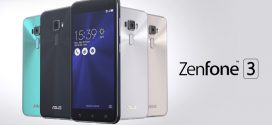
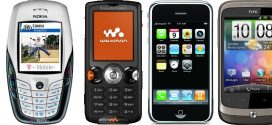

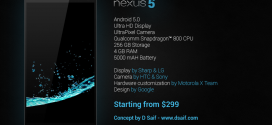
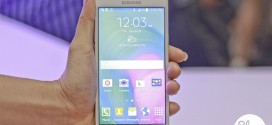
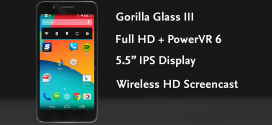
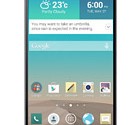
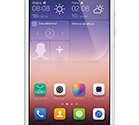
No adobe flash player why